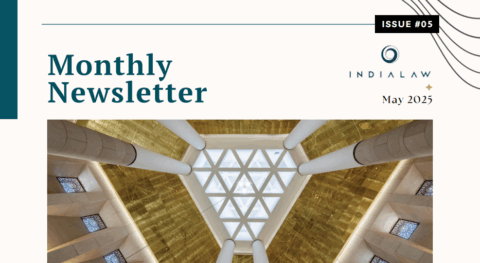Redefining KYC: SEBI’s Directives for Universal Accessibility

Introduction
The digital revolution has transformed how services are delivered, making them faster and more efficient. Initiatives like the Digital India Programme have aimed to expand the digital economy and improve citizen access to essential services. However, the digitisation of processes such as Know Your Customer (KYC) has not been as inclusive as it should be, particularly for persons with disabilities. The Supreme Court of India’s judgment in Pragya Prasun v. Union of India 1represents a significant step towards addressing these gaps, broadening the scope of Article 21 of the Constitution to ensure that digital services are accessible to all, including persons with disabilities and those with facial disfigurements. The Securities and Exchange Board of India (SEBI) has also introduced comprehensive measures to ensure the accessibility and inclusiveness of digital Know Your Customer (KYC) processes for persons with disabilities (PwDs) vide its circular.
Table of Contents
Background and Legal Provisions
The Supreme Court of India has played a pivotal role in advancing inclusivity within digital services, particularly with its judgment in Pragya Prasun v. Union of India. This landmark decision aligns with international obligations outlined in the United Nations Convention on the Rights of Persons with Disabilities (UNCRPD). It emphasises the implementation of the Rights of Persons with Disabilities Act, 2016 (RPwD Act) and its accompanying Rules, 2017, which collectively aim to uphold the principle of reasonable accommodation.
Legal provisions addressing the rights and accessibility needs of persons with disabilities emphasise inclusivity and equal participation. Section 13(1) of the Rights of Persons with Disabilities (RPwD) Act guarantees equal rights for individuals with disabilities to manage their financial affairs, underscoring their autonomy. Section 42 mandates access to information and communication technologies (ICT) through measures such as audio descriptions and sign language
interpretation, ensuring equitable access to information. Additionally, Section 46 requires service providers to achieve accessibility compliance within two years of the notification of relevant rules, fostering accountability. Complementing these statutory mandates, the National Policy on Universal Electronic Accessibility, 2013, establishes comprehensive standards for electronic and ICT products, creating a robust framework for universal accessibility.
Implementation and Enforcement
Implementation
The Supreme Court Bench of Bench of Justice J.B. Pardiwala and Justice R. Mahadevan has laid down a comprehensive enforcement mechanism to ensure compliance with its directives. The enforcement of accessibility standards for digital KYC processes mandates strict compliance by all regulated entities, both government and private. Departments are required to appoint nodal officers to oversee adherence, and periodic audits by certified professionals must involve visually impaired individuals in testing phases. The RBI is directed to issue guidelines introducing alternative methods for liveness verification, moving beyond traditional practices like eye-blinking, and clarifying that video-based KYC (V-CIP) can be used for onboarding without such requirements. Amendments to enhance OTP-based e-KYC for face-to-face authentication and maintaining paper-based KYC as an accessible alternative are also essential. Furthermore, inclusive communication options such as sign language, closed captions, and audio descriptions must be provided, alongside the development of accessible formats like Braille, easy-to-read materials, and voice-enabled services to ensure equitable access to public services and notifications.
Enforcement
The enforcement of the Court’s directives lies in the combined efforts of government agencies, private entities, and civil society. Strict timelines for accessibility compliance and regular audits are crucial for achieving this vision. Furthermore, the involvement of stakeholders, including representatives from the disability community, ensures that solutions are practical and comprehensive. Judicial precedents such as Rajive Raturi v. Union of India and Distribution of Essential Supplies and Services During Pandemic 2reinforce the importance of accessibility as a fundamental right and underline the significance of addressing the digital divide.
The Government of Goa has implemented initiatives to make Know Your Customer (KYC) processes more accessible for persons with disabilities (PwDs). Financial institutions are encouraged to adopt inclusive practices, such as alternative verification methods, simplified documentation, and acceptance of thumb impressions. Guardian assistance is also facilitated to ensure equitable access for individuals requiring support. These measures align with national accessibility standards and aim to remove barriers to accessing essential financial services. By
integrating assistive technologies into KYC procedures, the state demonstrates its commitment to promoting financial inclusion and fostering an accessible ecosystem for all, especially PwDs.
SEBI Directives
The Securities and Exchange Board of India (SEBI) has introduced progressive measures to make digital Know Your Customer (KYC) processes more accessible and inclusive for persons with disabilities (PwDs). In a circular issued on May 23, 2025, SEBI directed registered intermediaries, including brokers, mutual funds, and financial entities, to adopt alternative verification methods. Recognising that traditional liveness checks like eye-blinking may not suit everyone, SEBI emphasised options such as head movements, OTP-based authentication, real-time video recordings, and document presentation during video calls. These measures aim to ensure that all individuals, regardless of physical ability, have equal access to financial services. The initiative aligns with the Supreme Court’s directives on inclusivity and reflects India’s commitment to the Rights of Persons with Disabilities Act, 2016, and international accessibility standards. Through these steps, SEBI reinforces its dedication to fostering an equitable financial ecosystem for all.
Importance of the Initiative
This initiative is monumental in redefining inclusivity in the digital age. By recognising digital access as an integral part of the right to life and liberty under Article 21, the judgment underscores the necessity of designing digital ecosystems that cater to all. The significance extends beyond legal compliance; it is about fostering a society where autonomy, dignity, and equal participation are fundamental norms.
The initiative also emphasises the responsibility of service providers to adopt universal design principles. Ensuring accessibility not only enhances the user experience but also aligns with broader goals of equity and social justice.
Concluding Remarks
The Supreme Court’s judgment in Pragya Prasun v. Union of India underscores digital accessibility as a fundamental right under Article 21 of the Constitution. By mandating measures such as the appointment of nodal officers, regular accessibility audits, and alternative methods for KYC verification, the Court has reinforced the need for inclusive digital services. This landmark decision highlights the State’s responsibility to ensure equitable access for persons with disabilities, setting a strong example for integrating accessibility into India’s digital infrastructure.
For further details, write to contact@indialaw.in
By entering the email address you agree to our Privacy Policy.



